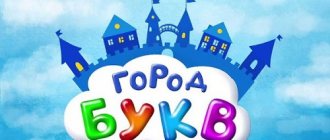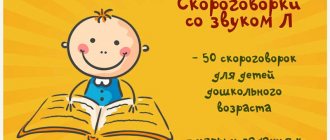Definition
Onomatopoeia in Russian is:
1. Reproduction of various sounds of the surrounding reality.
If, for example, you visited a dolphinarium, and the performance you saw delighted you, then you won’t be able to talk about it in a boring and dry way. You will try to convey the atmosphere of this action using onomatopoeia: the cry of dolphins, the splash of water, the sound of music.
Example:
- door creaking;
- bird cry;
- the sound of a musical instrument.
2. Creating words that sound similar to such sounds.
When talking to a child, you cannot do without onomatopoeic words - they simply will not understand you! A little person learns about the world by comparing a phenomenon or living creature with the word that denotes it.
Example:
- the cat meows - meow-meow;
- it's raining - drip-drip;
- the man laughs - ha ha.
Imitating a specific voice with musical sounds is also called onomatopoeia.
Onomatopoeia
There are two points of view on onomatopoeia as a part of speech.
I point of view
Onomatopoeic words are classified as interjections. (Gvozdev A. N., Vinogradov V. V.)
II point of view
Onomatopoeia is an independent part of speech. (Shansky N.M., Tikhonov A.N., encyclopedia “Russian language”.)
Onomatopoeias are unchangeable words that, with their sound composition, reproduce sounds made by humans, animals or objects.
- He talks to you, and he himself: cough-cough-cough... and tears in his eyes.
- (A.P. Chekhov)
- - Kitty, say: ball.
- And he says: meow!
- (S. Ya. Marshak)
- I'm driving, driving in an open field;
- Bell ding-ding-ding...
- (A.S. Pushkin)
Galkina-Fedoruk E.M. emphasizes that complete, identical reproduction of the sounds of birds, animals, and natural phenomena is not possible in any language.
Speech sounds similar to those produced by a particular creature or natural forces are conveyed only approximately and conditionally. Moreover, in different languages, onomatopoeias corresponding to the same sound are different. For example, in the Aboriginal language of Australia, kwa-kwa will sound like twonk-twonk. Therefore, there are contradictions, but, on the other hand, there is an “onomatopoeic theory” of the origin of language. Shansky N.M., Tikhonov A.N. and the authors of the Russian Language encyclopedia believe that onomatopoeias have an independent lexical meaning. A specific feature of onomatopoeia is the sound design, or the sound motivation of the lexical meaning.
Galkina-Fedoruk E.M. and prof. Shcherba L.V. say that onomatopoeias do not have lexical meaning. In every language, onomatopoeias have a constant phonemic composition: oink-oink (about a pig), glug-glug (about the sound of liquid). Onomatopoeia, like interjections, are collectively meaningful linguistic signs, recorded in dictionaries, but unlike interjections, the semantics of onomatopoeia is not closely dependent on context, intonation, and does not require facial and gestural accompaniment.
Onomatopoeias are uninflected words (they do not have inflectional forms), usually consist of repeated words (ha-ha-ha), but can also vary phonetically (tick-tock, bang-bang).
Chesnokova L. D. identifies three functions of onomatopoeia in the text:
1. They are independent statements.
- Bow-bow! — Shots were fired.
2. Perform the function of direct speech.
- The cooper was working: knock-knock-knock.
3. Acquiring a nominative meaning, they act as significant words and are used as members of a sentence.
- But the stupid cuckoo
, - Proud talker
- One thing
keeps saying
its cuckoo ... - (M. Lifshits)
- The doctor leaves, the candle goes out, and
“
boo-boo-boo
is heard ... - (A.P. Chekhov)
- Ding-ding-ding
,
ding-ding-ding
- - The bell is ringing...
- (E. Yuryev)
Onomatopoeia actively participates in word formation. They serve as the basis for the formation of verbal interjections, the verbs themselves (usually with a suffix - ka
: bark, whisper, whisper) and verbal nouns (cackle, laugh, bark).
Author: Naumova Irina
© September 16, 2012, 21:49
Share this post:
Kinds
Onomatopoeia is an important way for children to understand the world around them. Onomatopoeic words in Russian imitate:
- the cry of birds (crows: kar-kar, chickens: ko-ko-ko);
- animal voices (dogs: woof-woof, horses: yoke-go);
- the sound of musical instruments (balalaika: tren-dren, bell: dili-don);
- sounds of natural phenomena (rain: drip-drip, thunder: bang-bang);
- sounds made by people (coughing: cough-cough, walking: stomp-stomp).
All the variety of sounds that surround us can be represented in onomatopoeic words. And they will be clear to everyone without additional explanation!
Onomatopoeia as the initial stage of development of speech function in a child
Consultation for speech therapy group teachers
Junior preschool age
Onomatopoeia as the initial stage of development of speech function in a child.
Onomatopoeia or speech imitation
- this is the reproduction, following the speaker, of the sounds, words, and phrases he has spoken. At first it looks like an echo: the adult speaks and the child immediately repeats. To prevent a child’s communication with an adult from resembling a game of parrots, it is important to remember that speech must be activated in the child’s practical activities, in play. In this case, emotional contact, positive motivation, and the child’s steady attention are important. To develop speech imitation, you need to start with the development of imitation in general: “Do as I do.”
Onomatopoeia is the initial stage of development of speech function in a child with normal speech and in a child with speech disorders; they only acquire them at different times.
Adults should always remember how their speech sounds:
-speech must be correct, without speech disorders;
- articulation must be clear, the child must see the movements of the adult’s lips;
-speech should not only be emotional, but also well intonated, emphasizing the stressed syllable;
-words and phrases offered to the child for repetition must be pronounced repeatedly;
- the adult stimulates the child’s active speech with the help of questions;
- the adult gives the child only samples of correct speech; the child should not repeat the substitute words he reproduces.
Stages of development of speech imitation:
Repetition of individual sounds that carry meaning in the game.
Repetition of amorphous words. These are words-onomatopoeia, words-syllables that have a certain meaning. These are imitation of animal voices - woof, qua, meow, etc.; imitating the sounds of children's musical instruments - ding-ding, bom-bom, doo-doo, etc.; imitation of traffic noises - tu-tu, beep, etc., and other various amorphous words: the child can use them to replace words that he is not yet able to pronounce.
Repetition of words. At first these are simple short words - mom, dad, kitty, give, na, etc.
Particular attention should be paid to the child’s assimilation of words-actions (verbs), since they play a key role in the development of children’s speech: the more words-names of actions in a child’s speech, the higher the level of his development!
Repeating short phrases. This is the stage of combining several words in one sentence (at the initial stage - 2-3 words). For example: Where is dad? There's a kitty there. Here's a spoon.
Gradually, the number of words in the phrase spoken by the child increases, and the child learns inflection and grammatically correct combinations of words in a sentence.
Application.
“Our frog is the head of the swamp, sits on the sand and says: “Kva-kva.”
“The cockerel was afraid to fall into the river and kept shouting: “Ku-ka-re-ku.”
“My bell rings ding-ding all day long.”
“The bunny gnaws the carrot appetizingly and creates a little noise: “Chrum-crunch””
“The rain says: “Drip, drip.” You need to take an umbrella with you.”
“The horse runs merrily and clatters its hooves. This is not a boot, but the sound of a knocking “clack-clack-clack.”
“The pig says: “Oink-oink, I’ll give you some candy.”
“The clock gives us a sign of time and it sounds “tick-tock”.”
“A steam locomotive travels around the world and repeats: “Too-too, I’m going.”
“Anechka got lost in the forest and called out to her friends: “Ay-ay.”
Onomatopoeia is an important stage in the development of a child’s speech. Thanks to onomatopoeia, the child develops sound pronunciation, accumulates a passive vocabulary, and develops a sense of rhythm.
Features of onomatopoeia in Russian
Onomatopoeic words are characterized by:
- repetitions (bom-bom, ko-ko-ko), onomatopoeic words enhance the emotional impact;
- use as a separate noun (The loud tick-tock hurt the ears.);
- transformation into other parts of speech (laughter, laugh, laughing).
Thus, onomatopoeia conveys the atmosphere and creates an image. Let's try to talk about watches in different ways:
- The clock hung on the wall. Showed the exact time.
- The clock ticked rhythmically, a sunbeam played on the wall.
Which one do you prefer? To create an image and mood, onomatopoeic words are necessary.
The difference between onomatopoeic words and interjections
Separately, it should be noted the difference between onomatopoeic words and interjections. Despite the external similarity, these are not the same thing: the first transmit sound, the second convey emotions.
Examples of interjections:
- The meaningful “Shh” is, without a doubt, a request to remain silent.
- “Wow, great!” - joy and delight are obvious.
- “Cool!”, “Blah blah blah” are fashionable forms of interjections in modern slang, saying “good, great,” or about something understandable or empty.
A separate group includes words that are both interjections and onomatopoeias. For example, “Gee-gee-gee” expresses laughter with its sound and at the same time conveys a feeling of joy and fun.
Functions
The main role of onomatopoeic words is to repeat the sound.
For example, if we want to reproduce the sound of a flying mosquito, it will be “zzz”. And the ticking of a clock looks like “tick-tock.”
In addition, onomatopoeia is a way of creating an expressive effect. For example, compare:
- The dog is small. The puppy frolicked and yelped funny “yelp-yelp” at the flying butterflies.
- The dog is big. A huge dog sat at the gate and barked importantly “woof-woof” if someone passed by.
- The dog is angry. The dog bristled and growled “rrrr”, the cat was not afraid, but backed away.
- The dog is whining. Somewhere a dog whined pitifully “oooh”, bringing melancholy.
Here, onomatopoeic words convey shades and intonations of essentially one action. Agree, in each case a completely different animal with a certain set of emotions appears in the imagination.
Application
Sound imitation is widely used in many areas of human life.
In pedagogy
Imitation is one of the methods of producing sounds for poorly speaking children.
During classes with a speech therapist, such a child is asked to caw like a crow (carrr) or hiss like a snake (shhh). And also take part in games with the sound of certain actions: plop-plop (a pig is swimming in a puddle), boo-boo (a bear fell from a tree).
Imitating animal and nature sounds is especially helpful for babies. This way, they learn with pleasure and begin to speak faster.
In fiction
In literary works, the effect of sound presence is achieved with the help of onomatopoeia. Using words with hissing sounds, you can reproduce noise or rustling. Example: The whisper of rain was heard in the rustling leaves of the trees.
Also, onomatopoeic words can convey the emotional background of the scene being described, express the state of the hero and characters, and the sensations of the actions taking place.
The musicians came running, the drums started beating, Bom! Bom! Bom! Bom! A fly dances with a mosquito. And behind her is a bug, a bug, boots, stomp, stomp.
K. Chukovsky
Onomatopoeia gives a feeling of celebration, dancing, fun! Isn't it incendiary?
In folklore
Folk songs, poems, and nursery rhymes, which children love very much, are replete with onomatopoeic words.
Example: Bang bang! Oh oh oh! My little bunny is running away.
And here's another:
And the owls from the forest With their eyes: clap-clap! And the goat from the stable Nogami: stomp, stomp!
Onomatopoeia helps with figurative perception and is why children like it so much.
In colloquial vocabulary
In everyday speech, onomatopoeic words enhance the conveyed emotions and give expression to the conversation:
- I'm tired of your chatter!
- I called, but no response.
In advertising
Sound imitation expands perception, catches attention, attracting a potential buyer. And, most importantly, it is very well remembered: Bouillon cubes - glug-glug.
Onomatopoeia in literature. Examples:
Let’s take the poem “The Sea” by V. Khlebnikov (a famous futurist who is fond of word creation):
The waves are jumping lata-tah! The waves are jumping a-tsa-tsa!
“Lata-tah” and “a-tsa-tsa” are, according to the author, the very sounds with which the waves “jump”. To a person in everyday conversation, using such onomatopoeia would seem strange and inconvenient, because he would simply not be understood. The language of poetry is another matter, because when it comes to literature, the concept of sound-likeness also comes into play. It is closely related to onomatopoeia, but is not at all identical to it. Let's look at this term as well.








